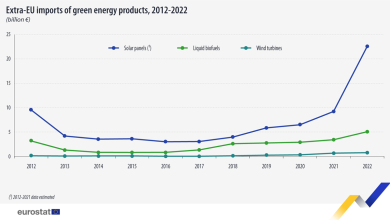Professor Dr. Eng. Lazar Avram: Drilling on Offshore Platforms – Quo Vadis?
We are talking with Professor Dr. Eng. Lazar Avram, PhD, Dean of the Faculty of Petroleum and Gas Engineering within the Petroleum-Gas University of Ploiesti, about the beginnings of drilling on offshore platforms and major changes in the drilling paradigms caused by the pressure to develop new resources, due to the inherent domestic depletion and increasingly challenging drilling areas.
The first offshore drilling rig, in the conventional sense, was built in the Gulf of Mexico, in 1947, at depths of only several meters (of course, the beginning of offshore drilling dates way back: in 1897, only 38 years after colonel Edwin Drake had drilled the first onshore well, H.L. Williams was credited for drilling a well from a wooden pier in the Santa Barbara Canal in California; in the early 1930s a well was drilled in the swamps of Louisiana, with the help of barges etc.). In the decades that followed, thousands of offshore drilling rigs started to operate around the world.
“Of course, offshore drilling processes, as recovery operations, are fundamentally the same as the onshore ones, except that special types of rigs are used, and their selection depends to a great extent on water depths and location of drilling and recovery operations,” says Professor Eng. Lazar Avram, PhD.
Offshore drilling rigs, built in a wide variety of types and variants, are most often classified according to the possibility of changing the location during working hours. Therefore, we have drilling islands, stationary platforms (fixed and gravitational) and mobile platforms (self-elevating, submersible, semi-submersible and drillships).
“Widespread, self-elevating mobile platforms (jack-ups), such as the Romanian ones, are generally used in shallow waters, with depths, most often, up to 200 meters. Instead, when it comes to greater water depths (of over 300 meters), semi-subsea drilling platforms or drillships are used,” adds Dean Lazar Avram.
And if we remember the history of early drilling at great water depths, then the most eloquent landmarks must be sought in the Gulf of Mexico and off the coasts of West Africa and Brazil.
But once an area with great potential has been identified, a huge, fixed platform will be built, from which 40 or more wells will be drilled, together with the outbuildings and facilities related to ancillary works and drilling teams. A typical example in this regard is the Troll Adin platform (one of the largest platforms in the world), in the North Sea, belonging to multinational company Statoil Hydro, which operates in waters with depths of 300 meters.
“Despite so many common elements of onshore and offshore drilling, the latter are much more challenging, so that the multitude of inventions and innovations revolve around overcoming these challenges (I said before and I think I wasn’t very wrong, that performance in offshore drilling is greater than in sports!). It’s about, among other things, facilities related to the personnel on the platform and the multitude of subsea operations that must be carried out in various working conditions.
As regards oil and gas extraction from offshore fields, we should point out that the current trend is that a large part thereof be carried out on the bottom of the sea, as a result of facilities related to sand separation and its reinjection before being pumped to the platform. Or, moreover, it can be pumped onshore, without visible installations above the sea. Subsea installations promote the objective of exploitation of resources in the so-called ultra-deep waters which, until recently, were entirely inaccessible.
On the other hand, although most offshore structures concern oil and gas exploration and production, we should not forget that there are also some major similar structures, sometimes complementary, which concern capitalization on offshore energy (offshore bases, offshore airports etc.),” Professor Eng. Lazar Avram, PhD, also says.
In other news, an offshore petroleum platform can be considered, at a different scale, a small society, with all the support functions necessary to maintain the personnel comfortable at sea.
For example, in the North Sea, the personnel are transported by helicopter, the shift taking place every two weeks (the employees of Romanian Black Sea platforms also commute with helicopter every two weeks; but they can remain even one month on the platform if the helicopter cannot fly due to the weather).
Supplies and waste are transported by ships and they must be properly mapped, given that the surfaces of the platform, for work and the auxiliary ones, are limited. For this purpose, efforts are made continuously to move as much personnel as possible onshore, where management experts or experts from certain technical sectors can keep in touch with the platform through videocalls or other performing telecommunication systems.
However, the coin has a flip side… Offshore petroleum production involves great risks for the environment, especially in terms of oil spills from both carriers from the platform to onshore facilities and pipelines, or accidental leaks from the platform. Also, there is an important impact of water produced during the drilling or well production processes, water which contains variable amounts of oil or chemicals used in or resulting from oil production. Not to mention the fact that only a certain amount of water produced is usually allowed, which can then be returned to the ocean.
“The platforms, in themselves, pose environmental problems when they are decommissioned. Because, in order to extract oil, a platform will have to cope not only with problems related to its conditioning, but also with the management of various activities related to the action of the marine environment, seismic uncertainty etc. At each corner of the drilling installation there are huge engines to keep the working systems stable. When the ocean pulls in one direction, the propellers push in the opposite one…
Other inherent problems, to which all attention must be paid, are related to the drill bit and the assembly above it; the floating drilling strings, which reduce part of the tension transmitted to the platform; drilling that must cross several areas with different pressures; the technical challenges and the enormous costs of searching for oil at these great depths of water etc.
On the other hand, the success rate of teams working in the field of exploration drilling must be neither probable nor possible, but visible and certain that oil will be found, given that drilling a test well in the deep oceans could cost more than USD 83 million. It’s a lot of money even for an oil major! Of course, the rewards for those prepared to take the risk are huge, as are the limits of technology in extreme environments in the fierce struggle to maximize efficiency and minimize time on site. In this sense, with the advent of deepwater operations, concepts such as ‘parallel operations’ or ‘reduction of flat time’ have become familiar areas focused on new technologies,” says Professor Eng. Lazar Avram, PhD.
Also, with the emergence of ‘unconventional resources’ and the fracturing of ‘sweet spots’ as the main targets of exploration, technology must also provide a capacity for ‘smart drilling’ to optimize access to the target in a way that maximizes production. And technological advances in the last decade are not just random evolutionary processes, but a radical change in well drilling technologies. They often represent a major change in the drilling paradigms caused by the pressure to develop new resources, due to the inherent domestic depletion and increasingly challenging drilling areas. It’s about dual gradient drilling systems, extensible piping, column drilling, deep rock dislocation, resin and metal composite systems, microsystems, smart drilling etc.
Therefore, offshore platforms are a permanent challenge for specialists in the oil and gas industry, concludes the expert.







